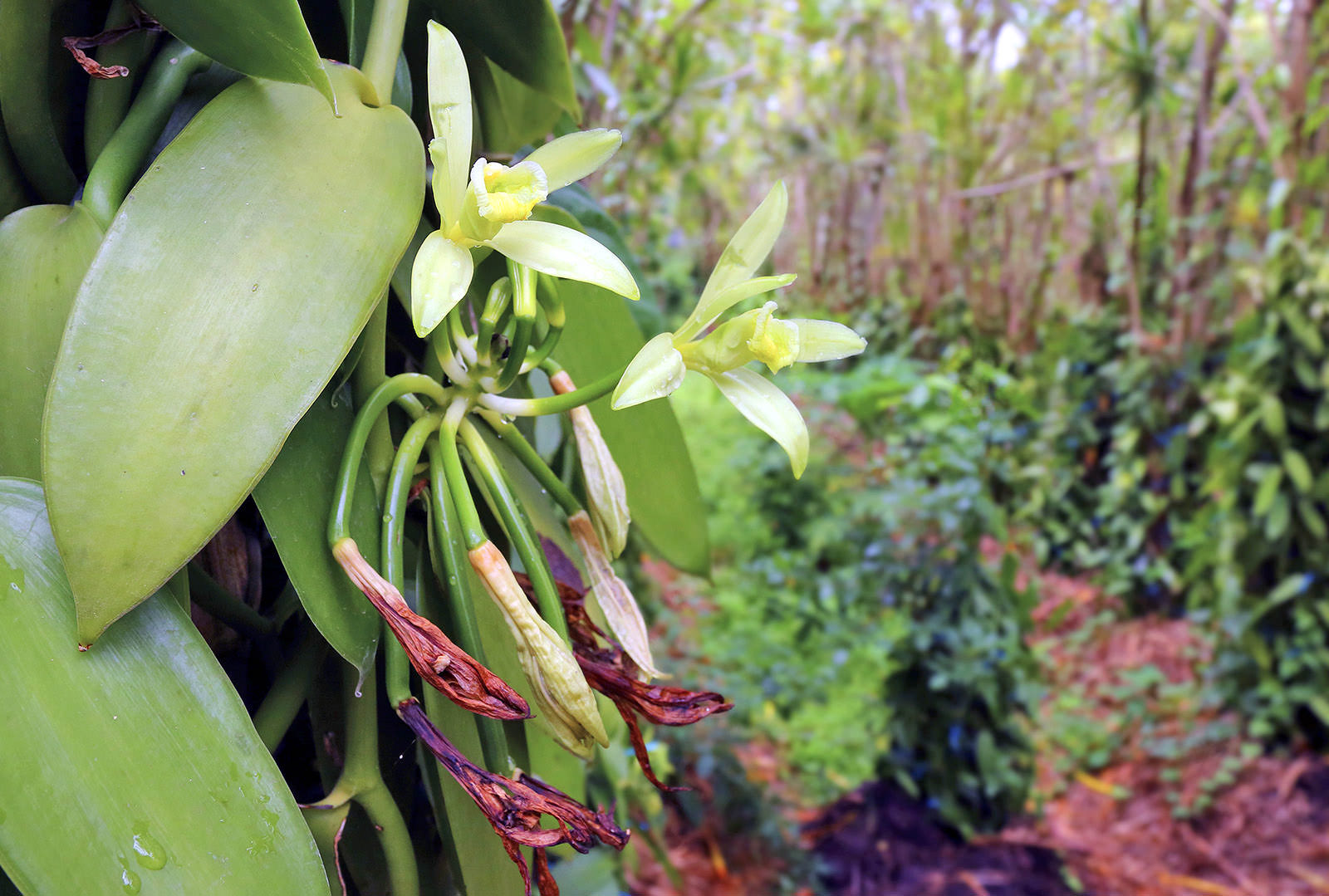
Madagascar Vanilla
Vanilla planifolia
Basic Information
🌿 Family: Orchidaceae🗺️ Zone: 10-11
Other Names:
- Bourbon Vanilla
- Flat-Leaved Vanilla
🌡️ Ideal Temperature : 60°F – 85°F
🔥 Heat Tolerance: Up to 95°F
❄️ Cold Tolerance: Down to 40°F
🌱 Type: Perennial
Layers
- Vine
Functions
- Edible
- Medicinal
- Pollinator
Pests
No pests associated with this plant.
Description
Madagascar Vanilla (*Vanilla planifolia*) is a perennial climbing orchid native to Mexico and Central America, now extensively cultivated in Madagascar. This vine can reach lengths of up to 15 meters (49 feet), featuring thick, fleshy stems and succulent, oblong leaves. It produces greenish-yellow, fragrant flowers that bloom briefly, each lasting only a day. The plant thrives in warm, humid tropical climates and requires a support structure to climb, often utilizing host trees or trellises. The fruit, known as vanilla beans, are long, slender pods that contain numerous tiny seeds. These pods are harvested and cured to develop the characteristic vanilla flavor and aroma.
✂️🫘 Methods to Propagate:
- **Cuttings:** Propagation is typically achieved through stem cuttings. Select healthy, mature stems and cut sections approximately 30 centimeters (12 inches) long. Allow the cut ends to dry for a day to prevent rot, then plant them in a well-draining, humus-rich substrate. Maintain high humidity and indirect light to encourage root development.
🌞💧 Sun and Water Requirements:
- **Sun:** Prefers partial shade; direct sunlight can cause leaf scorching. An environment with filtered light, mimicking its natural understory habitat, is ideal.
- **Water:** Requires consistent moisture but not waterlogged conditions. Water regularly to keep the soil evenly moist, and ensure adequate drainage to prevent root rot. High humidity levels (80% or above) are beneficial for optimal growth.
🧑🌾👩🌾 When to Harvest:
- **Pods:** Vanilla pods are typically harvested 8 to 9 months after flowering, when they begin to turn yellow at the tips. The pods are then hand-picked and undergo a curing process involving blanching, sweating, and drying, which develops their distinctive flavor and aroma.
Purpose
- Edible: The cured vanilla beans are widely used as a flavoring agent in culinary applications, including baking, confectionery, and beverages.
- Medicinal: Traditionally, vanilla has been used for its purported antioxidant and calming properties, though scientific evidence is limited.
- Pollinator: In its native habitat, the flowers are pollinated by specific bees; however, in cultivation, hand-pollination is necessary to produce fruit.